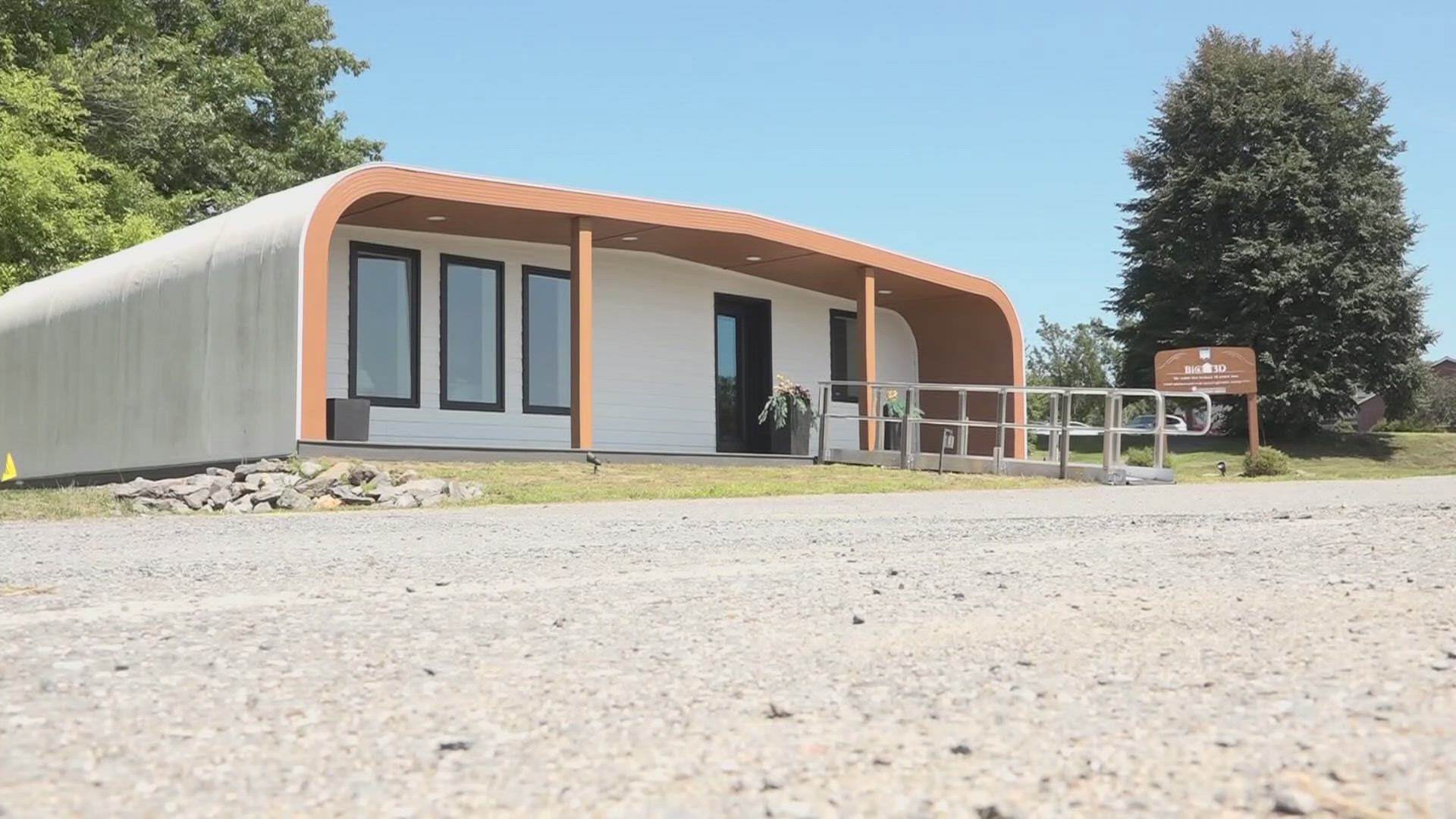ORONO, Maine — The affordable housing shortage can be felt throughout the country, and that's no different here in Maine.
"We haven't invested in really building up our housing stock for the last 30 years," HUD Assistant Secretary for Congressional and Inter-Governmental Relations Dr. Kimberly McClain said.
Hoping to address this, members of the department of Housing and Urban Development and the University of Maine are working together to come up with an innovative solution that involves the world's largest 3D printer.
"We're all about building new technologies that can solve problems that really matter here in the state of Maine in particular," UMaine President Joan Ferrini-Mundy said.
Nearly two years ago, the university's Advanced Structures and Composites Center unveiled BioHome3D, the first completely bio-based 3D printed home.
"We've looked at how it's held up under the cold Maine winters, snow, ice, low temperatures, and also heat," McClain said.
Unlike other 3D printed structures, the 600-square-foot home is fabricated out of wood waste from sawmills and other recycled materials.
With a bedroom, bathroom, and combined living room and kitchen area, the house is geared toward low-income families and individuals.
The construction process is not only more environmentally friendly but also less time consuming and requires little physical labor, making it a more affordable option overall.
"Not everyone can afford a $400,000 home, so just this technology really allows builders to be able to reduce those costs," McClain said.
After touring the 3D home, McClain said she sees a variety of different uses for them.
"It can be used for transitional housing, where we're just trying to get folks off the street and surrounded with the resources they need. It also allows us to just get everyday people into homes."
McClain added she also hopes the project will provide a blueprint for similar efforts across the country.
"This really sets the stage and has a possibility of helping other states who are looking at how to shift industries based upon the current needs that are out there so the possibilities are endless," McClain said.
Together, HUD and UMaine hope to bring nine bio-based 3D-printed homes to the Bangor area sometime in the future.

